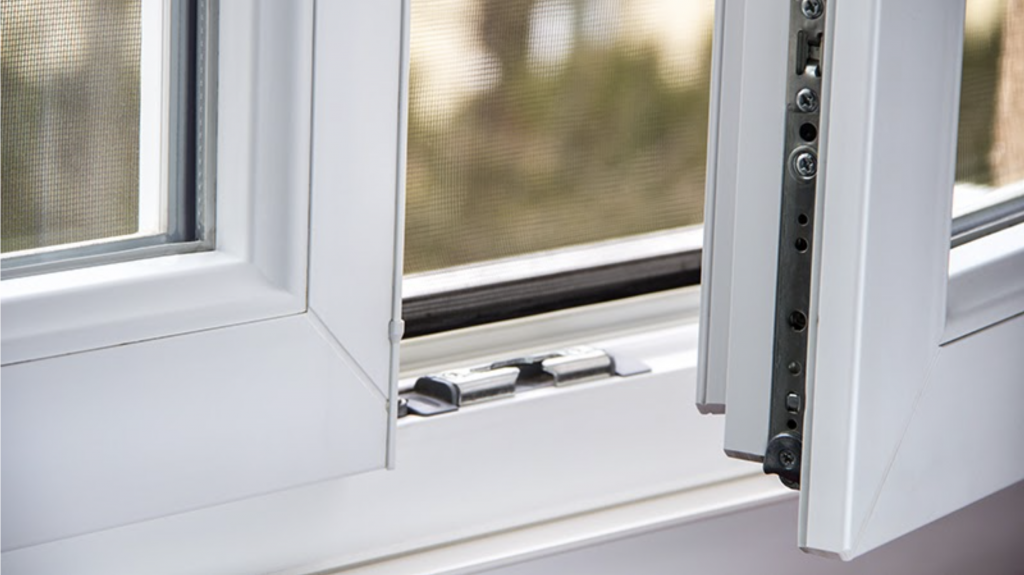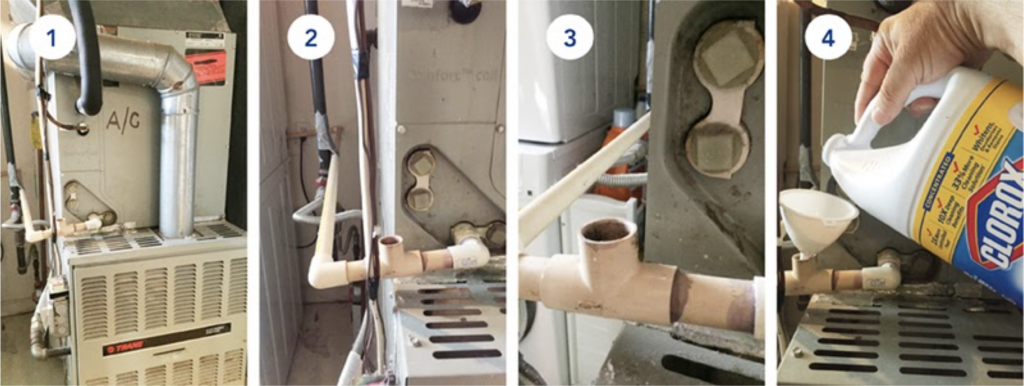Summertime And the Living Is … Easy If You Follow These Home Maintenance Tips
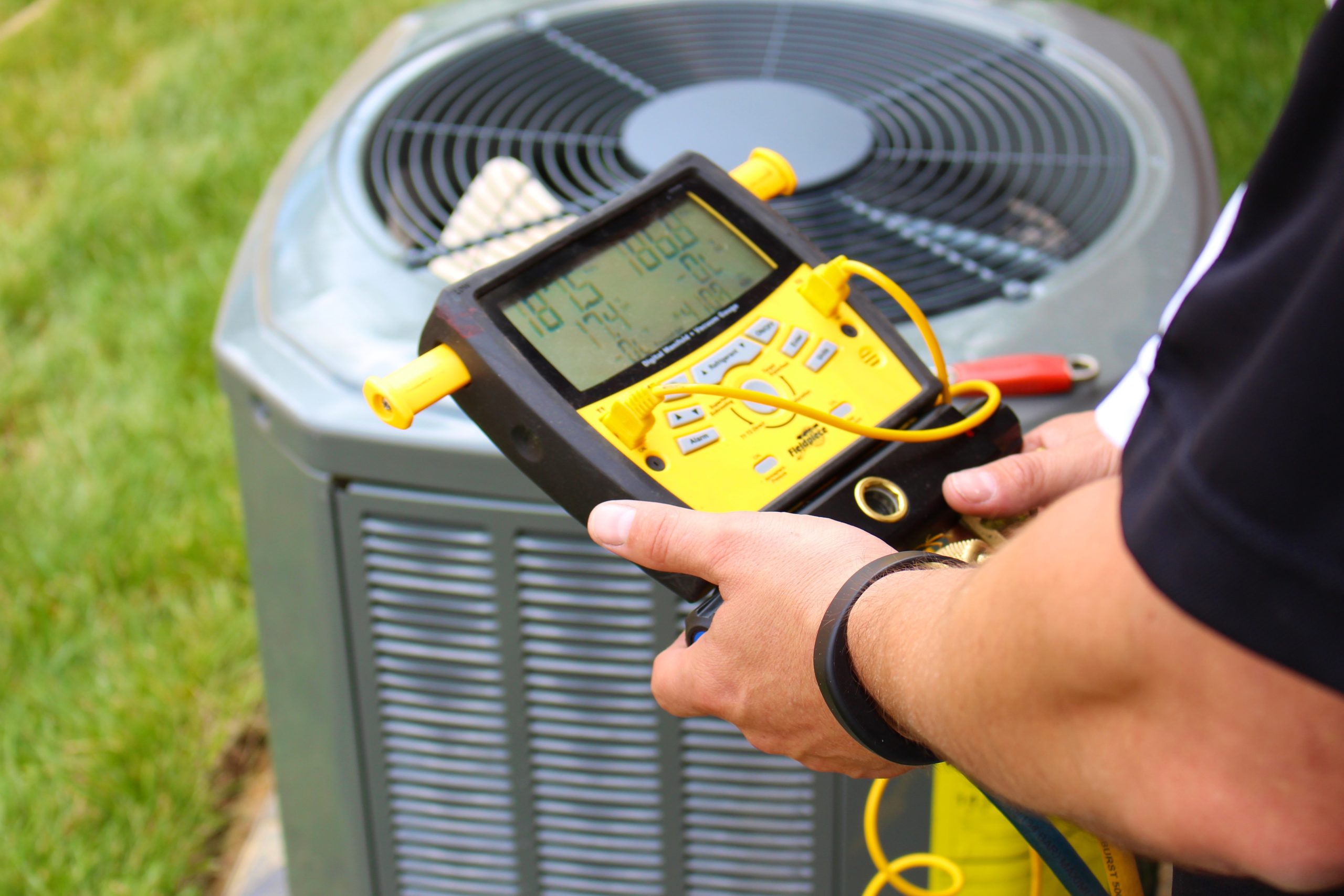
Home maintenance never takes a vacation, especially during the summer months. Here are tips and resources to help you keep up-to-date.
Summertime is the season of recreation, relaxation, and road trips. It’s also the perfect time to catch up on home maintenance. Whether you own your home or are renting, take an overview of the systems in your home – big and small – to ensure you are living in a house that is sound, energy-efficient, and healthy for all inhabitants.
Your home is one of your biggest investments – whether you own and are paying a mortgage or rent and have a hefty security deposit – and a little TLC goes a long way. Here are a few of our best suggestions for keeping your home maintenance on track this summer and into the rest of the year
Checklists & Budgeting Trackers
While every home is unique, there are some standard maintenance items that can be found at every type of property. There are many checklists available to keep up with projects big and small, including these from Better Homes & Garden, Apartment Therapy, and the Department of Housing and Urban Development (HUD).
Apps
Dwellin calls itself “a sustainability company that helps U.S. homeowners tackle home maintenance and preserve more of the planet for future generations.” The app estimates annual home maintenance costs and carbon emissions, and then shows residents steps they can take to reduce both.
If you’d like to delegate home maintenance tasks to your own personal property manager, check out Birdwatch (a local company!) which offers concierge services for homeowners.
Centriq not only helps homeowners with DIY appliance inspections, it also offers home maintenance tips and calendars as well as a way to save important home documents.
If you’re looking to sell your home, Curbio is one company that allows you to make repairs now and pay for it at settlement. This gives owners the flexibility to prepare their home for top-dollar offers while deferring the costs. Bonus points that they are a local Maryland company!
To-Do This Summer
Before we get too much further into July, make a note to check the status of these important systems as soon as possible:
HVAC – It’s not uncommon for bills to rise during the sweltering mid-Atlantic summer months when air conditioning is running almost constantly. But if you see a sudden spike, it could be a sign that something isn’t working properly.
- Change air filters at least every three months, more often if there are allergens such as pet hair or plant pollen present.
- Evaluate temperatures and humidity levels throughout different rooms of the home, monitoring for areas that aren’t cooling properly.
- Listen for sounds such as banging or knocking that could indicate overworked or broken pieces within the system. You should be able to hear the system kick on and off, with a quiet, regular hum while it’s working – but anything else should be investigated.
- Overhead fans are designed to change direction to push cool air down in the summer and pull warm air up in the winter. Check that your blades are set counterclockwise for summer (just remember to change it back to clockwise when it gets cooler).
- Keep vents clear from furniture, debris, and dirt.
- Most professionals recommend servicing HVAC twice yearly, which should include a thorough cleaning of coils, drains, and any system elements; inspection of connections, motor operations, and thermostats; checking refrigerant levels and pressure; testing safety controls; and lubricating moving parts.
Roof – From thunderstorms to nesting insects to scorching temperatures, a roof sees a lot of action over the summer.
- Heat and humidity can cause the expansion and contraction of roofing material. Replace old, cracked, or missing shingles, especially after strong storms.
- Keep gutters clear of leaves and debris to avoid the possibility of flooding and leaks.
- Trim back trees to reduce the chance of falling branches.
- Check eaves for signs of infestation from critters and insects. Not only can they potentially enter the home and injure inhabitants, but they can also cause structural damage if left unchecked.
- If it seems like the home stays warm no matter what, it could have inadequate insulation and ventilation, which can lead to condensation, humidity, and poor air quality.
Plumbing – It’s not the flashiest system in your house, but from outdoor sprinklers to increased showers and kiddos home from school, your water and pipes could be working overtime.
- Check nozzles and sprayers to ensure they are clear from sediment buildup, increasing flow efficiency and reducing the spread of bacteria and mildew.
- Same for drains! A homemade batch of baking soda & vinegar is a monthly must to keep drains flowing properly.
- Septic systems require attention, especially in the summer when they are put to maximal use. There are some best practices that occupants can do on their own – such as limiting waste and solvents that can kill healthy bacteria at work, and a professional septic servicer should be on your call list this summer for a routine clean-up.
- Try to limit water usage as much as possible to avoid overworking the system.
Electrical – Energy efficiency is the name of the game during the summer, both to keep your bills low and not overtax municipal grids.
- Check for cracks around doors and windows to ensure no cool air is getting out and no humid air is getting in.
- Make sure that anything that has a vent – range hoods, dryers, HVAC – is kept clean and clear.
- Test your ground fault circuit interrupters (GFCI) outlets monthly. Same for smoke and carbon monoxide detectors.
- Consider installing exterior lights and security systems if you plan to be away for extended vacations.
- Use the scheduling function on your thermostat for cooling efficiency when people are most likely to be home, and not waste electricity on an empty home.
- Many homeowners are investing in home generators to keep things running in the event of power disruptions from storms.
If you need a professional to address some of the systems in your home, our experienced McEnearney | Middleburg Real Estate | Atoka Properties agents have recommendations at the ready. We care about your home investment as much as you do and are ready to help you protect it!
Don’t miss a post! Get the latest local guides and neighborhood news straight to your inbox!
How to Make Your Garden More Eco-Friendly

If you’re an avid gardener, you know that taking care of your plants involves much more than just watering them. It’s about creating a sustainable ecosystem that not only benefits you but also benefits your surroundings and the environment as a whole. In this blog post, we’ll share some little-known tips and tricks on how to make your garden more eco-friendly as you start planning your spring blooms!
1. Start composting
Composting is an easy and effective way to reduce waste and create nutrient-rich soil for your plants. Rather than throwing away food scraps and yard waste, composting allows you to reuse them in a way that benefits your garden. Not only does it reduce your carbon footprint, but it also saves you money on fertilizers and other gardening supplies. There are many ways to get started with composting, from building your own bin to purchasing a pre-made one. Once you start composting, you’ll wonder why you didn’t do it sooner!
2. Use rainwater harvesting
Rainwater is a free and abundant resource that can be used to water your garden without having to rely on unnecessary irrigation. All you need is a rain barrel or storage container to collect the water, which is then distributed to your plants. This helps reduce your water bill and the strain on municipal water sources. Plus, rainwater is naturally free of chemicals and additives, making it better for your plants overall.
3. Choose native plants
Native plants are an essential part of any eco-friendly garden. They have adapted to local conditions and require minimal maintenance, making them ideal for sustainable gardening. Plus, they are more likely to attract native wildlife, such as birds and butterflies, which can help you create a diverse and healthy ecosystem. By choosing native plants, you’re supporting local biodiversity and reducing the spread of invasive species.
4. Use natural pest control methods
Pest control is an essential aspect of gardening, but it doesn’t have to involve harmful chemicals. Many natural pest control methods are just as effective, such as companion planting and insect-repelling herbs. For example, planting marigolds around your tomatoes can help to repel nematodes, while planting garlic and lavender can repel aphids and other pests. These methods protect your garden while promoting a healthier, safer environment for you and your family.
5. Choose sustainable garden products
The products you use in your garden can have a significant impact on the environment. When shopping for gardening supplies, look for products that are made from sustainable materials and are free from harmful chemicals. For instance, you can choose a biodegradable seed-starting tray instead of a plastic one or buy organic fertilizers that are free from synthetic additives.
Creating an eco-friendly garden is a simple but impactful way to make a difference in the world. Whether you’re a seasoned gardener or just starting out, these tips and tricks will help you create a “greener” garden that benefits both you and the planet.

Pragya Mishra is the Founder and Principal of Artscapes, LLC, a Northern Virginia-based landscape architecture firm that specializes in designing outdoor transformations that bring you joy. With 22 years of professional experience, she works closely with each client and her network of top-tier contractors to make each project vision a reality. Follow Artscapes on Instagram @artscapes_living and see examples of past projects on her website, www.artscapesliving.com.
Take a look at our website for all of our listings available throughout Washington, D.C., Maryland, and Virginia.
Don’t miss a post! Get the latest local guides and neighborhood news straight to your inbox!
Fall Home Maintenance Tips from Our Associates

Now that the leaves are falling and we are thinking of hunkering down for the cool weather, it is an opportune time to catch up on routine home maintenance—but where to start?
For many, a home is their largest investment. Keeping track of these items can seem more manageable and less daunting once you realize how simple some tasks can be.
Grab your tool belt and check out these often-overlooked tips from our Associates:
Windows and Window Hardware
“Getting ready to sell your house and wondering if those old windows need to be updated? Defer to your utility bills–if they seem excessive, it is likely that your infrastructure is inefficient and you’d be trying to pass this on to a savvy prospect. You may not have to blame it on the old windows–many are extremely efficient, and some people think the new ones aren’t made the way they used to be. Check older windows: do they open and close easily and safely, and they’re not drafty? If so, there is a simple, inexpensive update you can do while keeping those Steady Eddie windows. Change the window sash locks. It’s amazing what this facelift can do! Even hardware that is period-perfect is available online!”
Janet Caterson Price, Alexandria Office
Filter Changes
“Remember to change the filter in your furnace and even more importantly, make sure to use filters. During a recent home inspection, the inspector found no filter. Guess what? The sellers had to pay for a system check and cleaning to assure my buyer that the system was clean and operating properly. A few dollars for a filter would have saved the sellers a couple hundred dollars!”
Lauren Tawil, Washington DC Office
Check A/C Condensation
“Condensation created by A/C has to go somewhere. In a window unit A/C, it just drips outside. But in a central A/C, it has to be piped to a drain. The problem is that drain can clog, leaking onto the floor and into the furnace. Since most A/C “interior coils” sit on top of the furnace, a leak can actually KILL the furnace in addition to causing a minor flood!
Check out these tips to prevent this:
- The interior part of the A/C sits on top of the furnace. They share the same fan and ductwork. Look for the white/beige pipe coming out of the lower edge of the A/C.
- This is your condensate line. It should tie into a drain, but can also go to a pump which then pumps to a drain or outside.
- Many people have a Cleaning “T”. This allows for cleaning during the summer months, when water is actively being made by the A/C.
- Flush the pipes with bleach – your furnace will thank you! During the summer, pour a cup of bleach into the “T” every few weeks to flush it and prevent algae buildup.”
Peter Crouch, Alexandria Office
Clean Out the Clothes Dryer Vent
“Probably one of the most overlooked maintenance items I see at home inspections is cleaning out the clothes dryer vent. It’s very simple to do, you just need a lint brush and a screwdriver. The vent on a clothes dryer can become clogged with lint over time, causing the dryer to dry less efficiently and possibly resulting in a house fire (Yes, this does happen. It happened to a friend of mine!). To clean your dryer vent, scoot the dryer out to access the back and detach the ductwork from the dryer with a screwdriver. Use a special lint brush with an extendable handle to clean the inside of the dryer and the inside of the ductwork pipe, being careful not to poke a hole in the flexible duct. Then go to the outside of your home and remove the exterior vent cover. Sometimes you will find bird nesting materials, so check this frequently. Use the same brush and clean the vent duct. You should do this once a year. Your dryer will thank you with less electricity used!”
Miriam Miller, Alexandria Office
Chimney and Fireplace Inspection
“Fireplaces are one of those commonly overlooked items in a home for regular maintenance. Usually, we see clients use them in the colder months, and then forget about it until the following year’s fall or winter season. Especially if you have a wood-burning fireplace that gets regular use, it’s imperative you have it professionally cleaned annually. A good chimney technician will inspect both to see how the structure and liner are doing if the damper is working correctly, that there aren’t any missing or loose bricks and if there’s any build-up of soot, which can cause your fire to burn inefficiently, and more importantly, could result in a chimney fire.”
Lauren Budik, McLean Office
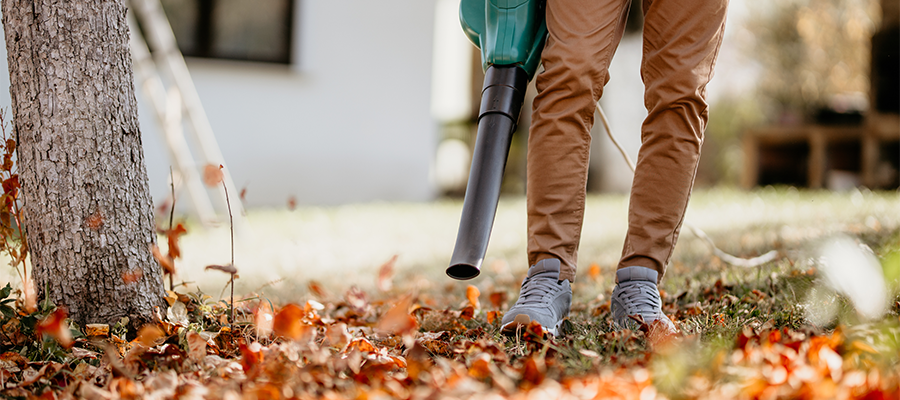
Landscaping
“Fall landscaping is needed to keep your yard healthy and protected for the winter.
Things I do to my own yard include:
- Aerating, seeding & fertilizing the grass.
- Trimming & pruning bushes, shrubs, and hedges.
- Mulching all beds.
It’s also the time to plant bulbs for spring flowers.”
John Sommer, Alexandria Office
Hoses and Underground Water Systems
“When will you no longer need to have your garden hoses outside and shut off and drain your outside hose bibs? This is a really important regular maintenance item because you don’t want to have a frozen or burst pipe when the outside temps drop below freezing. The best advice is to pick a date in the fall that you will remember each year. Perhaps the weekend the time changes. You will also want to be sure you winterize any underground watering systems as well.”
Nick Kuhn, Arlington Office
Don’t miss a post! Get the latest local guides and neighborhood news straight to your inbox!
How to Be Smart About Septic and Well Systems

September 19th – 23rd is SepticSmart Week! When my husband and I bought our home in Vienna in 2001, we had never previously considered that we would ever own a home with a septic system. We were a bit apprehensive but took the plunge and have never looked back. To some, the idea of purchasing a home with a well or septic system can seem overwhelming, but many attractive DC area homes have one or the other, and sometimes both! While Washington DC itself is one hundred percent public water and sewer, wells and septic systems are far more common than you would think in the greater DC suburbs.
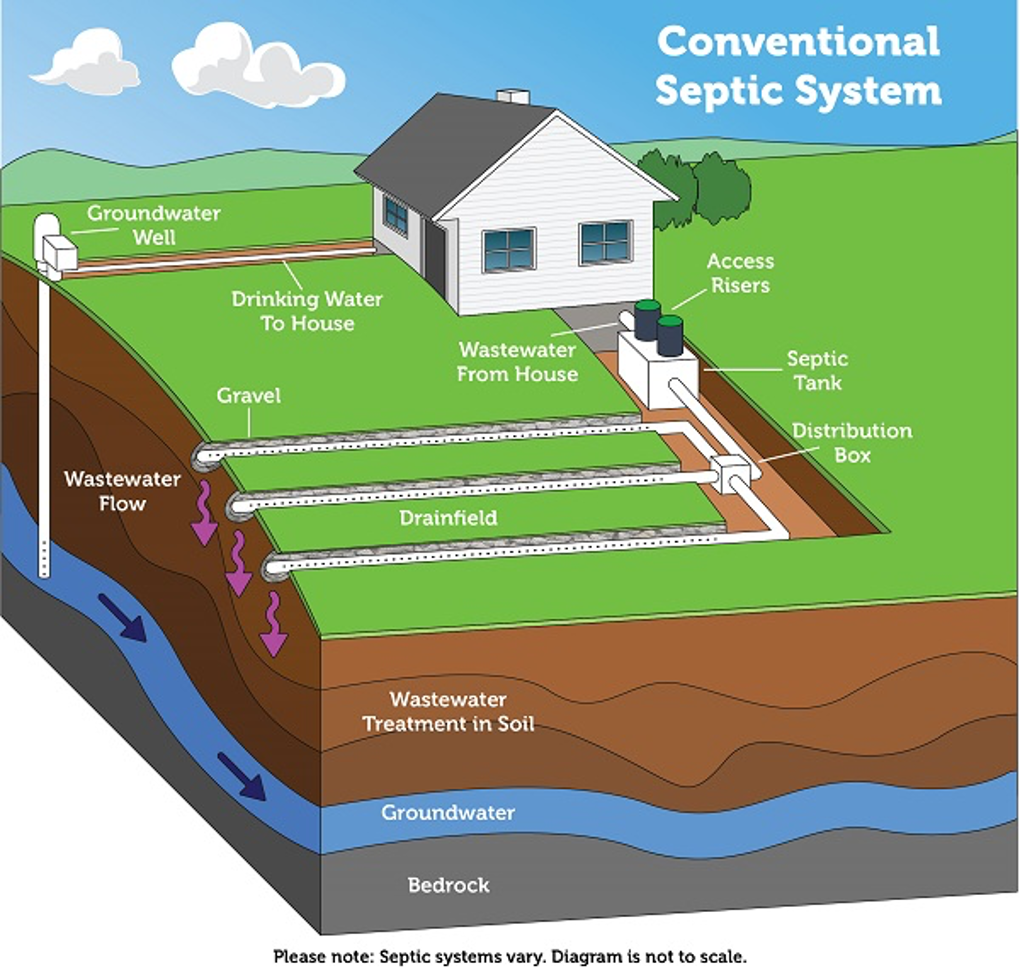
Source: Environmental Protection Agency
What is a septic system? A septic system is a way to dispose of household wastes on an individual level. Over the course of the life of a septic system (about 40 years) the cost can often be far less than paying a monthly or quarterly sewage bill. Replacing a gravity system costs approximately $10K while an alternative system can cost up to $85K to replace. If you take certain precautions, you will have few to no issues with your septic system. Here are some quick septic reminders:
1) Every home’s pumping schedule is different. Usually, a septic tank will need to be pumped once every three to five years. However, pumping frequency depends on a variety of factors including tank size, usage, and age of the system. The county will usually send you a reminder when it’s due.
2) You can’t flush everything. Flushing items that are not biodegradable will lead to big problems in your septic system. This includes dental floss, feminine products, pet waste, as well as baby wipes. These items can interfere with your system’s ability to break down waste.
3) Your system involves more than toilets. Every sink, tub, and pipe in your house will drain into your septic system, including your kitchen sink! Unlike homes on a sewer, food items should not go down the sink. Composting food waste is a great way to help your septic system, and your garden! Other items that should not go down the drain include oils, grease, chemicals, paint, and medications.
4) Proper maintenance extends its lifespan. Just like any other appliance in your home, your septic system will break down eventually. However, by sticking to a routine pumping and maintenance schedule, you can extend the lifespan of your system. Make sure to maintain plants and vegetation near the system to ensure roots do not block the drains. Keep cars and heavy vehicles parked away from the drain field and tank. Prevent system freezing during cold weather by inspecting and insulating vulnerable system parts.

Source: Circle of Blue
I clearly remember drinking a glass of well water from the tap for the first time at the home of a good friend. It tasted amazing! Pure, clean groundwater not contaminated or chlorinated. 1/5th of Virginia’s population depends on wells, approximately 1.6 million Virginians. Since Virginia is a buyer-beware state, there are no requirements on the seller’s end to disclose any known problems or defects. Laws concerning wells have only been in place since 1990, so if the house you are looking to purchase was built before then, you might consider having a Private Well and/or Septic Addendum added to your contract.
Overall, the state of Maryland has 420,000 homes on septic and 13% of the population is on well water. Prince George’s county has the largest percentage of people on wells in the country! Laws and regulations in Maryland vary depending on the county of residence in terms of permitting and other requirements, but all of Maryland requires at least 10,000 square feet of property for the initial drainfield and three reserve drainfields for a typical single-family home. These backup fields are built and put into service only when the main drainfield fails.
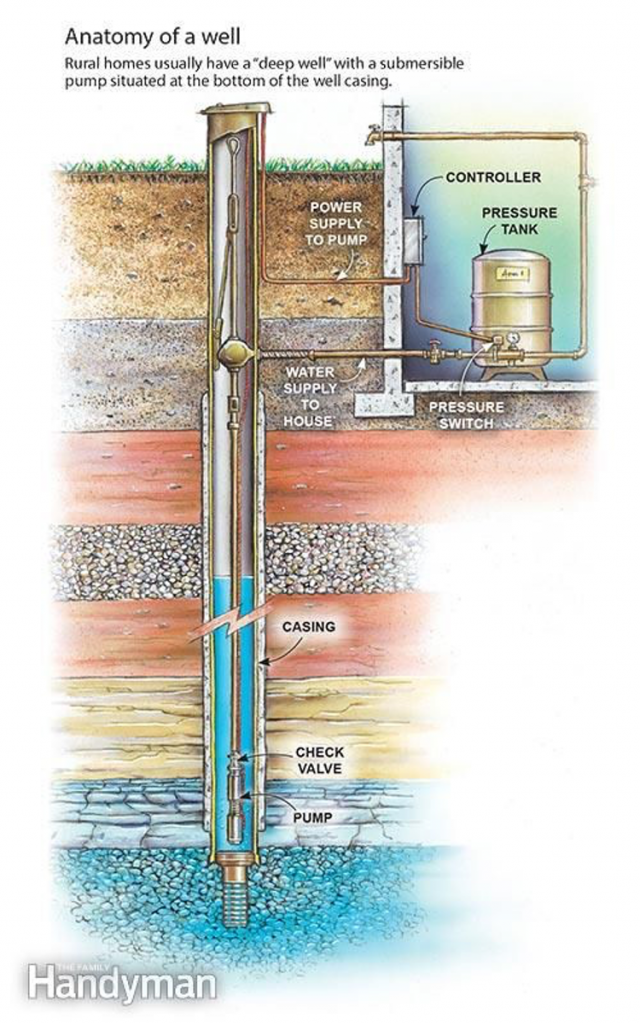
Source: familyhandyman.com
As with anything home related, it’s important to take care of your well. Well maintenance is similar to having your annual physical at the doctor. It is recommended by the CDC and Well Owner that your well and well water be inspected annually. Water testing looks for harmful bacteria and hard substances like total coliform bacteria, nitrates, total dissolved solids, and pH levels. Any found defects can be treated or remediated by an expert.
When looking at homes with a septic system and well water, some things to keep in mind would be that the septic field and well head need to be at least 100 feet apart in order to prevent contamination in the drinking water. The well head itself needs to be at least 50 feet away from the corner of the house. Another good rule of thumb is that a home should have at least 2-3 acres of land in order to support a well and septic system and still have enough land for a new field or well should one or the other fail.
Now that you know a little more about wells and septic systems, in your next home search don’t automatically discount a home for this reason! A home with a well or septic system has a well or septic because they have land and with land comes beauty. A good Realtor can help answer your questions and advise you on the next best steps!

Jean Beatty is a licensed real estate agent in VA, MD, and DC with McEnearney Associates Realtors® in McLean, VA. If you would like more information on selling or buying in today’s complex market, contact Jean at 301-641-4149 or visit her website JeanBeatty.com.
Don’t miss a post! Get the latest local guides and neighborhood news straight to your inbox!
Spring Showers Bring… Stormwater, Bayscapes, and Rain Gardens!
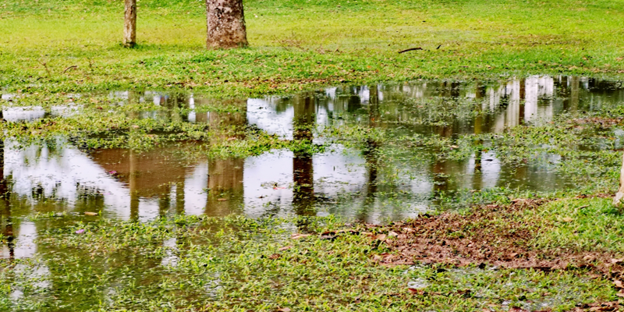
The inevitability of the rainy season is something that most regions are used to. In Alexandria and the rest of the DC-Metro area that rainy season comes in spring. Early spring showers prepare your landscape to thrive throughout the summer months as water percolates deep into the soil. But it’s not all roses and butterflies. The wet season can also mean it’s time to prepare your home and property for stormwater. Through your own proactive and ecologically-friendly stormwater management, you as a homeowner can protect your home from flooding, reduce harmful runoff, and make mother nature happy!
So what exactly is stormwater management? Stormwater management refers to the host of processes, techniques, and management protocols for dealing with stormwater, AKA rainwater that is running along the ground. To the public sector, this generally means big underground infrastructure designed to manage the flow of water to be least disruptive in what has become an increasingly impermeable urban environment. But on the residential side, and as a homeowner, your stormwater management generally refers to various processes that keep rainwater out of your home through a sequence of systems. Starting with your roof, stormwater runs off into gutters, before traveling through downspouts and dispersing into your yard or out to the street. This is where it enters either a body of water or public stormwater pipes. Once on the surface, grading and proper waterproofing along your home’s foundation are important to keep water moving and avoid pooling against your home where it could eventually cause flooding, mildew, and mold.
But the relationship with water does not have to be adversarial. After all, water is a most valuable resource, and in the context of your landscape, your soil’s ability to absorb water is the key factor in whether or not your lawn, trees, flowers, and shrubs survive and thrive. By introducing ecologically-friendly stormwater solutions into your landscape, you can maximize the ability of rainwater to beautify your home, enhance local populations of pollinators and birds, and enhance water quality.
While there are many solutions and variations of solutions to improve the general permeability of your soil, the most cost-effective, budget-friendly technique is conservation landscaping–often referred to as BayScaping in the Chesapeake Bay Watershed. This technique involves the deliberate planting of native plants with high ecological value in areas of your property that experience water and are sensitive to erosion, such as a sloped area. The specialty native plants used in conservation landscaping restore soil health through extensive root structures that help improve soil microbiology and, in turn, help your soil become nutrient-rich and sequester carbon from the air. The improved, more fertile soil is a welcome respite from the excavated backfill that makes up the principal soil medium for many homeowners of recently improved or built homes.
Rain gardens take BayScaping a step further and are an ideal enhancement when the soil conditions are such that water can sufficiently percolate into the soil. Rain gardens are a more labor-intensive enhancement that includes excavation and the introduction of high flow rate soil amendments, such as compost, sand, topsoil, and mulch. These amendments are mixed into a new soil medley that is well suited for developing extensive root structures and absorbing runoff water.
In order to absorb as much rain as possible, rain gardens are ideally located in a depressed area of your yard where you can direct a downspout and where the natural slope of the surrounding areas flows. It is also important that rain gardens be at least 10 feet from your foundation, and are in locations that do not otherwise have standing water, which would indicate either a high water table or low percolation rate. Rain gardens are generally designed to hold water for no more than 2 days after a rain event before drying out, which also helps to reduce mosquitoes. On one of the sides of the rain garden, we generally also create a berm and spillway to help retain water and direct its flow if the rainfall is significant. Some of our favorite installations include rain gardens that overflow into beautiful bayscapes.
As root systems and soil microbiology become established, rain gardens can become proficient in naturally treating contaminated runoff from impervious surfaces. As water flows through these areas, nutrients are absorbed and otherwise harmful chemicals are broken down. Simultaneously, butterflies, songbirds, and other beautiful pollinators are attracted to the rain garden, as a small ecological refuge. What’s not to love?!
There are many different types of native flowers and plant options to choose from when starting your rain garden or BayScape. Once your plants are in the ground, maintenance of your rain garden and BayScape is extremely important to ensure proper function. If you have a new rain garden, plants and flowers should be soaked every few days to help them establish deep root systems and create a dense bed of foliage. To ensure ideal growth, the area may also require pruning, seasonally mulching, and de-weeding of any invasive or competitive ground covers that can take over or out-compete the new native plants. Trash and other debris should also be removed. Monitoring the garden for any signs of erosion or compaction is very important to ensuring the soil medium is able to absorb water as intended. Though this may sound like a lot, it’s not. It’s just a matter of restoring and maintaining balance. Mother nature will do the rest!
If you find that you need help getting started with your rain garden or BayScape, please reach out to us. At TLC, we offer packages for rain garden and BayScape installations where we can complete an installation in a day. We also specialize in other residential stormwater enhancements such as dry-wells, rain barrels, permeable patios and driveways, and more. Please reach out to us with any questions or to learn more about what TLC can do for your landscape, and home! Visit us online at TLC Design to learn more and fill out a consultation form so we can chat or visit.
We wish you a beautiful spring!
Tactical Land Care
Tactical Land Care is net-zero to help protect our world and environment for all of us. We specialize in sustainable construction, conservation landscaping, and stormwater management solutions, including permeable hardscape and rain gardens. By working together, we can maximize the ecological benefit of your property.
Please give us a call at 703-879-7091, or email us at info@tacticallandcare.com, where someone from our TLC team will develop a plan with you to help enhance your yard or property for many years to come.

Patrick Moran, PMP, LSC, HIC, LEED | CEO Tactical Land Care
Patrick utilizes his passion for the outdoors along with his professional skills as a licensed Landscape and Home Improvement contractor in Virginia and Maryland, as well as a Project Management Professional (PMP) and LEED Green Associate. Patrick has a BA from Yale University, where he studied climate change and its impact on society.
Don’t miss a post! Get the latest local guides and neighborhood news straight to your inbox!
Winter Tips For Sustainable Snow Removal
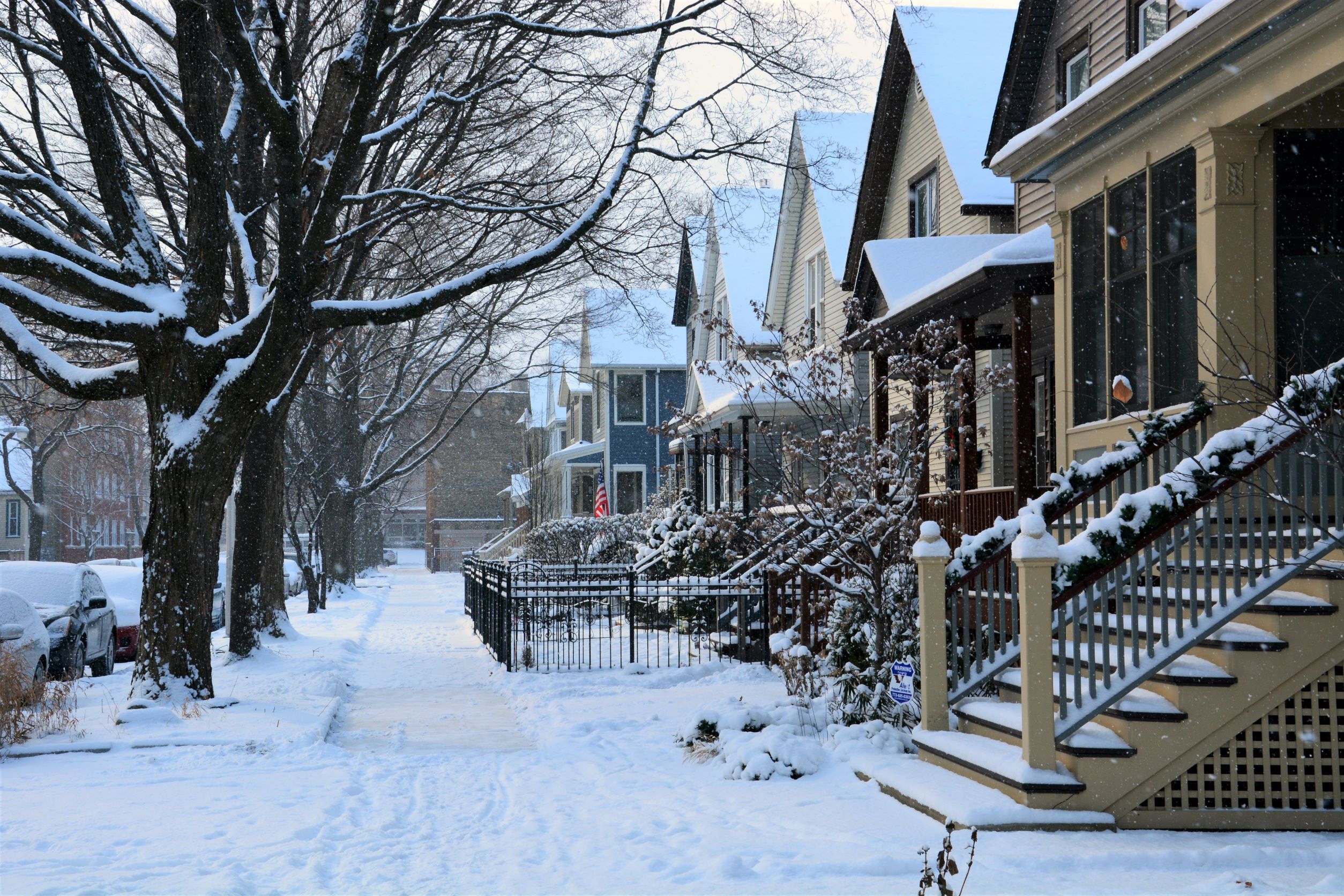
It’s cold out there! Winter is here, and with it are freezing temperatures, ice, and snow! How have you managed thus far? If the first big winter storm of the season showed us anything, it’s that we cannot take winter preparedness for granted. With the risk of stronger winter storms in our area forecasted in years to come, we must all be prepared and understand best safety practices for adequately dealing with snow and ice.

Having a plan in place to clear hardscapes, whether they be roads, sidewalks, or walkways, can make all the difference. Below, we’ll share some of the eco-friendly, economically ideal, pet-friendly tips we’ve learned along the way, which we use as we provide sustainable snow removal services.
The first thing to keep in mind is that moving snow is hard work! That’s because it’s cold and heavy. The weight of snow, especially when it is compacted or wet, can quickly sneak up on an unsuspecting weekend warrior, especially one not accustomed to moving a high volume of heavy weight. Don’t get caught off guard, and plan to shovel the snow intermittently throughout the storm if we are anticipating 4+ inches. I use the term shovel loosely, because sometimes simply pushing it to the sides is the best approach. Explore tools such as “man-plows” that allow you to push the snow at an angle similar to how a plow truck works. This can enable more snow to be cleared with less effort than traditional shoveling.
Typical cues for physical exertion, like sweat, can be missed with the cold temperatures, and your heart can be forced to work overtime. So be careful, and treat it like a workout. That means hydrating, warming up your body, dressing appropriately in a hat, gloves, and good boots, taking timely and appropriate rest breaks, and maintaining good posture to minimize the risk of injury. If you aren’t usually physically active outside, snow is not the best place to start, and it’s perhaps better to recruit someone to help you before the storm hits.
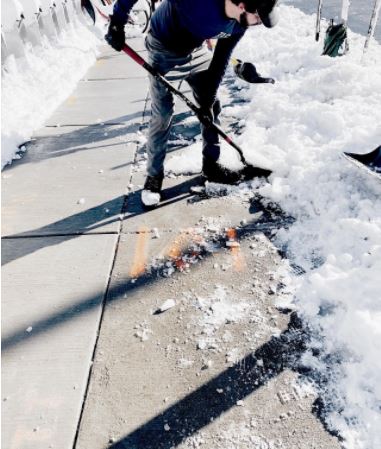
If you don’t plan to push the white stuff yourself, make the calls as early as you can, BEFORE the storm hits. Whether it is with the neighborhood handyman, the eager teenager down the street, or your landscape provider, set up your agreement early! Trying to line up help after the snow has fallen means you’ll be paying a premium in dollars and time.
The next question that you will need answers for is what de-icer will be used after a storm? De-icer is a combination of chemical ‘salts’ that decrease the melting point of water, meaning water it mixes with will not freeze as it normally would. Typical de-icers vary in their melting point, which will mean some de-icers will not be effective if temperatures are below their rated melting point.
Assuming you have a good product in mind, be sure that the de-icer is applied BEFORE the storm. This is a critical point to ensure the product works properly by forming a layer of saltwater between the snowpack and the surface. This layer will ensure the snow melts faster and is less likely to develop into a slippery ice layer along with the concrete.
The alternative practice of applying de-icer atop the snowpack is a less compelling option that can result in overapplication of materials and unhealthy winter stormwater runoff storms that wreak havoc on local waterways not to mention vegetation next to those hardscape surfaces. Chemical burning is a common occurrence for which there are few solutions beyond removing affected areas and waiting for new growth in the spring.
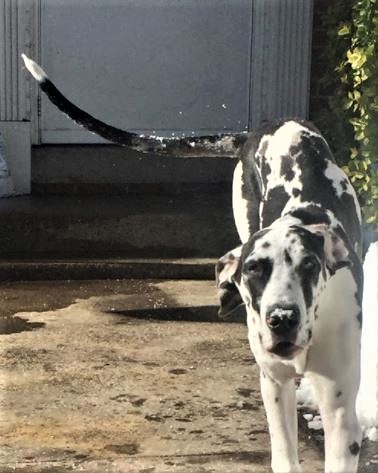
After a snowfall, it’s also important to consider our furry, barefooted friends. We’re proud to live in a dog and cat-friendly community, making pet-friendly de-icers a must. But unfortunately, many de-icers, including rock salt, can be highly corrosive and quickly dry and crack bare skin if exposed directly. If your four-footed friend is walking on your sidewalks or walkways, make sure to use a CMA (calcium magnesium acetate) or similarly sensitive product. If you’re walking through town, plan to wash and wipe down paws with a wet washcloth as soon as you get home, as many municipalities opt for rock salt as their go-to product given its low melting point.
Another option is sand which is used as an abrasive additive for traction. However, it can counter the effect of a de-icer so remember not to mix them directly.
Now that we’ve covered the ‘what’ and the ‘how,’ we’ll look at the when. Removing snow in a reasonable time after snow has fallen will help prevent ice from forming. Be sure to clear walkways before the first melt-refreeze cycle that is almost guaranteed to occur once the sun comes out and solar rays begin to melt the snow. If you wait until after the sun sets, you’ll find that the bottom layer of snow has become ice, which if untreated, will be fused to the hardscape below. Needless to say, ice is much harder to remove.
If the risk of ice is insufficient to stir you to early action in snow removal, check your local ordinances. Most local governments require property owners to maintain private rights-of-way, including sidewalks and driveways adjacent to public roads if they are used by the postal service. Failure to do so can result in a substantial ticket and fine.
Our most recent snowstorm showed that many folks weren’t prepared. Snow shovels and de-icer were sold out, and more snow was on the ground than many people knew what to do with. If this was you, don’t let it happen again! Next time you’ll be ready, whether you are handling it yourself, or calling in reinforcements.

Patrick Moran, PMP, LSC, HIC, LEED | CEO Tactical Land Care
Patrick Moran is the founder of TLC Design Co., an Alexandra-based small business located in Old Town, Alexandria. TLC has a professional team of landscape and construction tradesmen dedicated to offering clients sustainable solutions year-round. During the winter, our snow removal teams use environmentally-friendly de-icer and work with clients to pretreat sidewalks, walkways, and driveways to help ensure that snow and ice can be removed as quickly and efficiently as possible. Please reach out to us at 703-879-7091 or via email at info@tlcdesign.co, and we will be happy to be of service to you through future snowstorms and to help you prepare your property for the Spring season ahead.
Don’t miss a post! Get the latest local guides and neighborhood news straight to your inbox!
Great Service for My Sellers Even During Cicada Season
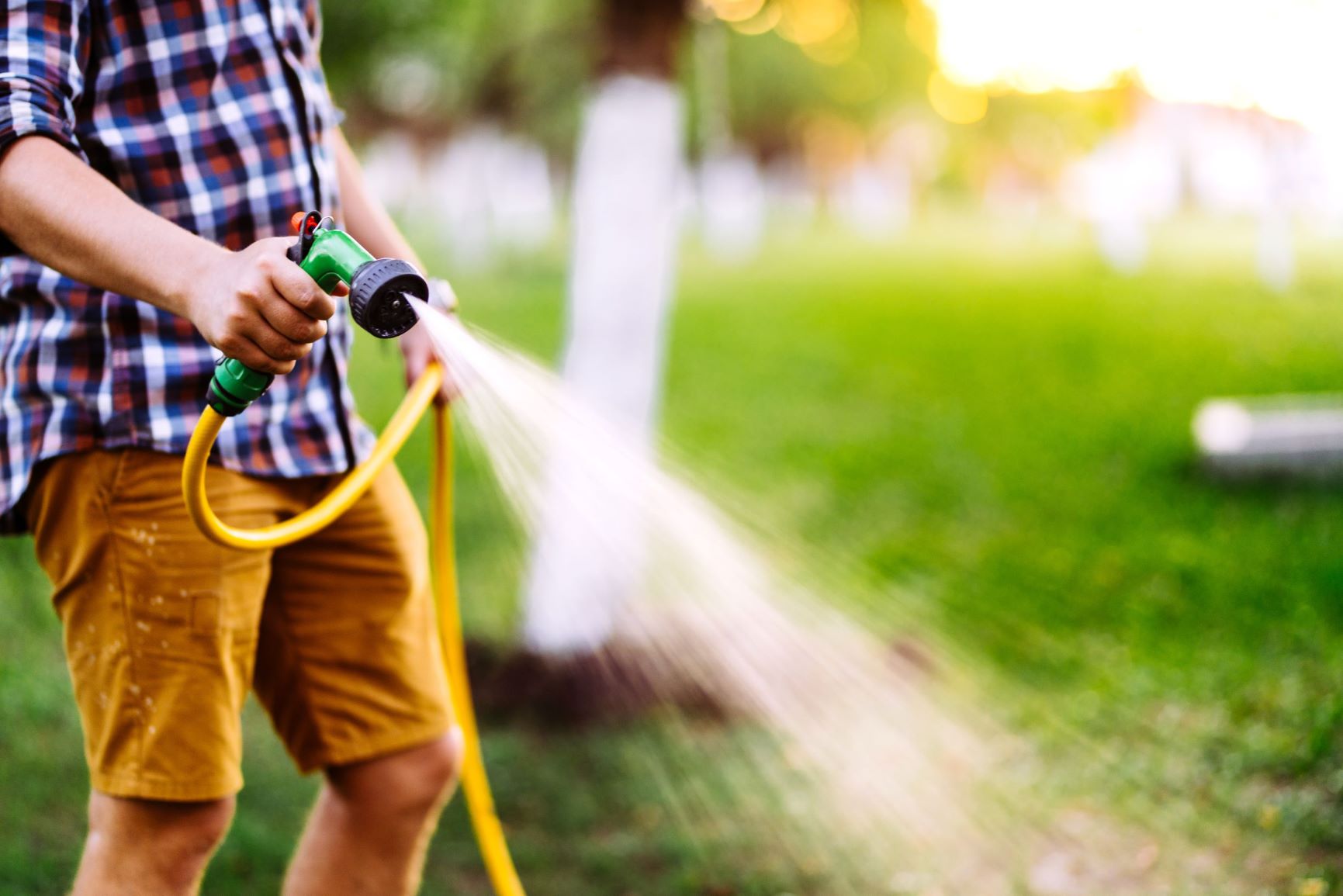
By now, you surely have come across at least a couple—or droves—of cicadas in your yard. I will confess that I was horrified, to put it mildly, (yes! I am a drama queen!) *Insert this emoji when I recently went to check on a home under contract and found the front walkway littered with insects and shed exoskeletons. Trying desperately not to make a scene in front of the neighbors, I called my co-listing partner to discuss how to handle it. She told me quite calmly, “We’ll clean it up.” What is this “we” business?, I asked, not so calmly. But she was right: Our clients were away, and it’s our responsibility to do whatever is necessary for the home—including addressing a mild phobia! Now, having taken the time to suppress my disgust–I did some research as to how best to get rid of cicadas, or at least make their presence this season more tolerable.
National Geographic refers to the insects as “foolhardy.” Surely, this will bring you comfort! (Well, it didn’t for me, but perhaps you’re more courageous.):
Another unusual aspect of the insects’ behavior is that, unlike almost all other non-noxious insects, “they do very little to escape predators,” Karban says, which is why some call them foolhardy in the face of a hungry animal. “Anything with a mouth is going to eat them, so it’s going to be a good year to be a bird” or any other predator, says John Cooley, an entomologist at the University of Connecticut.
While I wait for the predators – do I have any other options?
The website HowIGetRidOf.com offers some more active tactics to choose from. Those with stronger stomachs than mine may want to pursue the option titled “Pick Cicadas From Plants By Hand and Use A Garden Hose and Water”:
Because of their large size, spotting single cicadas on plants and trees is simple. If you have some time on your hands and a garden hose, you can simply pluck or swat them off of the trees or vegetation and spray them with water. This is a time consuming but effective cicada killer option.
As you can well imagine, I will NOT be plucking them by hand.
It looks like the best strategy for me, and perhaps many of you, may be to spend this spring working on overcoming any disdain for or fear of these creatures, and remembering that their time here will be short (a philosophical lesson of its own!)—and in the meantime, learning to stomach doing a little bit of extra “clean-up” whenever potential buyers, or even guests in your own home, are coming by.

Shirley Mattam-Male is a licensed real estate agent with McEnearney Associates, Inc. in McLean, VA. As an active member of the community since 2002, Shirley specializes in McLean, and is thrilled to have the opportunity to work closely with her friends, neighbors, former clients, and their referrals.
Take a look at our website for all of our listings available throughout Washington, D.C., Maryland, and Virginia.
Don’t miss a post! Get the latest local guides and neighborhood news straight to your inbox!


 Facebook
Facebook
 X
X
 Pinterest
Pinterest
 Copy Link
Copy Link
